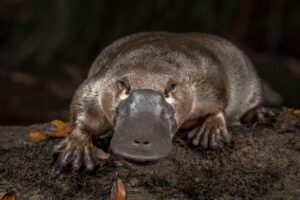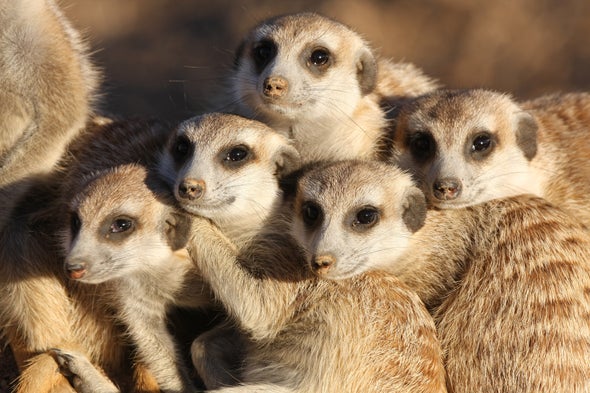Eastern long-beaked echidna (Barton’s long-beaked echidna)
INTRODUCTION
Hi, I am an Eastern long-beaked echidna. Also known as Barton’s long-beaked echidna. The unique fact about us is we are egg-laying mammals. I’m one of the largest monotremes. I have a down-curved snout. Our spines are only just visible through our long black fur. We may exceed 20 cm (8in) in length, with our tiny mouth at the tip and my small Close-set eyes at my base. I use my snout to find my healthy diet which consists of a variety of yummy ants, termites, grubs, and worms. I like to stay in tropical hill forests, sub-alpine forests, upland grasslands, and scrub. We are slow-moving animals. If we feel threatened we roll into a spiny ball for our defense, my common predator is feral dogs. For our protection, we dig burrows. My breeding season starts in July. My sweet females lay 4-6 eggs into her pouch. Hatching occurs 10 days later, and my infants remain in the pouch for 6-7 weeks, or until their spines develop.
- AVG. READING TIME: 7 MINUTES
- UPDATE: 10/04/2022
DIET : It eats a variety of ants, termites, grubs, and worms
HABITAT : Temperate forest, including woodland, tropical forest and rainforest, mountains, highlands, scree slopes. Open habitats including grassland, moor, heath, savanna, fields, scrub
SOCIAL UNIT : Individual
LOCATIONS : New Guinea.
STATUS / POPULATION : Vulnerable (IUCN) Facing a high risk of extinction in the wild in the medium-term future. / The total population size of Eastern long-beaked echidnas is likely to be low and may number fewer than 10,000 mature individuals
MAMMALS: EGG-LAYING
KEY FACTS

SCIENTIFIC CLASSIFICATION
Kingdom – Animalia
Phylum – Chordate
Class – Mammalia
Order – Monotremata
Family – Tachyglossidae Gill
Genus – Zaglossus Gill
Genus Species – Zaglossus barton
INTERESTING FACTS
1- They are egg-laying mammals
2- They have toothless jaws
3- Their body temperature is the second lowest out of all mammals
4- Echidna’s maximum speed is 2.3 kilometers per hour
5- They stay in the pouch for 7 weeks
6- Echidna’s curl up into a ball when they become frightened
7- Humans are the main predators of Eastern Long-Beaked Echidna
-
CALLING NAMES / SCIENTIFIC NAME
Calling name: Eastern long-beaked echidna, Barton's long-beaked echidna
Scientific Name: Zaglossus bartoni -
COLOUR VARIATIONS
Dark Brown or Black
-
LIFE SPAN : CAPTIVITY / WILD
Captivity: 50 years average
Wild: 30 years average -
APPROXIMATE SIZE : LENGTH / HEIGHT
Length: 48 - 60 cm (16 - 24 inches)
Height: Estimated (10 - 14 inches) -
TAIL
None
-
WEIGHT
4.2 - 6.5kg (8.25 - 14 lb)
-
MIGRATION
No migration
-
SEX IDENTIFICATION
Male: Males are smaller then females, males have their spurs through out the life.
Female: Females are also generally larger than males and typically lose their spurs later in life -
BREEDING SEASON
In July
-
REPRODUCTION / GESTATION PERIOD
Reproduction: Once a year
Gestation period: 10 days -
CLUTCH / LITTER SIZE
4 - 6 eggs
-
SIMILAR SPECIES
Short-beaked Echidna
-
LOOK A LIKE
Short-beaked Echidna
-
FARM ANIMAL
No
-
FOUNDED IN / DISCOVERED
1901
-
ORIGIN
New Guinea
-
DISTRIBUTION
Today they have a very patchy distribution, in three distinct populations. One in central Cordillera (Papua and Papua New Guinea), one in the Foja Mountains (Papua) and one in the Huon Peninsula (Papua New Guinea)
-
OCCURRENCE
Families: 2
Species: 5 -
FUEL FOR LIFE / TROPHIC LEVEL
Carnivorous
-
SIGNS / MARKS
One of the best signs that an echidna is about is the mark they make with their snout in soft sand and soil when they're searching for food, a small triangular furrow with a round hole at its apex. Also they have distinctive cylindrical blunt ended scats (faeces), about the size of human's small finger
-
PREDATORS
Humans and Feral dogs
-
AVAILABLITY IN ZOO / MUSEUM
Very little is known about Long-beaked Echidnas and unfortunately no zoo has been successful in breeding them
-
TO HUMANS
Echidnas are not dangerous
-
AS A PET
Not recommended
-
KIDS FAVOURITE
No




